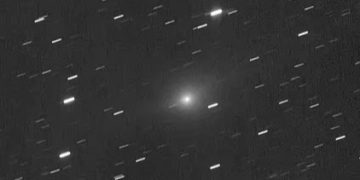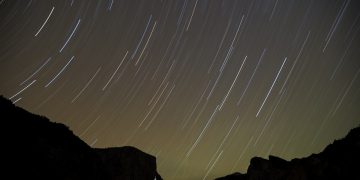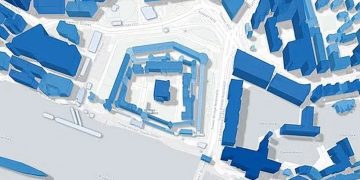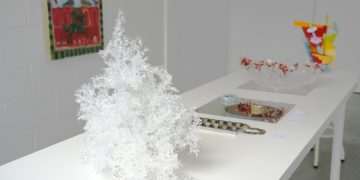A TOUGH lifeform could survive the brutal conditions of Mars.
That’s the verdict from scientists who spent five hours blasting it with a year’s worth of Martian radiation.

Mars is a brutal wasteland that is bombarded with dangerous radiation[/caption]

Humans would need significant protection to survive on the red planet’s surface[/caption]

Lichens are common on Earth, and is known for being hardy.
And scientists now think that lichens could survive the ionising radiation that life experiences on Mars.
This kind of radiation is extremely damaging, and is a serious threat to human plans for living on the red planet.
But researchers writing in the journal IMA Fungus say they reckon lichens could survive on Mars today, despite the planet’s barren surface.
Lichens are a strange “symbiotic” relationship between fungus and algae (or cyanobacteria).
Scientists were able to show that this lichen relationship remained “metabolically active” even with exposed to Mars-like atmospheric conditions.
That included being in darkness, and high X-ray radiation levels.
They tested two species of lichen: Diploschistes muscorum and Cetraria aculeata.
And they found that the former was cabale or surviving those brutal conditions – giving hope for the survival of an alien off-Earth lichen colony.
“Our study is the first to demonstrate that the metabolism of the fungal partner in lichen symbiosis remained active while being in an environment resembling the surface of Mars,” said Kaja Skubała, of Jagiellonian University in Kraków, Poland, who led the research.
“We found that Diploschistes muscorum was able to carry out metabolic processes and activate defence mechanisms effectively.
“These findings expand our understanding of biological processes under simulated Martian conditions.
“And reveal how hydrated organisms respond to ionising radiation – one of the most critical challenges for survival and habitability on Mars.
“Ultimately, this research deepens our knowledge of lichen adaptation and their potential for colonising extraterrestrial environments.”
Sadly, this doesn’t mean scientists have found – or will ever find – lichen already living on Mars.
But it means that an alien colony of lichen could potentially survive Mars’ harsh conditions.
HUNTING FOR E.T.
It comes in the same month as scientists revealing they’re almost certain they’ve spotted a key sign of alien life on a faraway planet.
Top astronomers at the University of Cambridge told The Sun they are 99.7% confident they’ve spotted the best-ever signal of biological activity on K2-18b.

This is what the ocean world of K2-18b might look like first-hand[/caption]
And they revealed that the best scenario that explains the discovery is that the planet is “teeming with life”.
The alien world is 120 lightyears away, and about 2.5x the size of Earth.
Astronomers spotted a molecule called DMS in the planet’s atmosphere.
Here on Earth, DMS is produced by the tiny algae that live in the ocean.

These microscopic phytoplankton can’t be seen with the human eye individually, but show up as coloured patches on water.
Similar – but alien – lifeforms might be responsible for the DMS detected with extreme confidence on K2-18b.
Lead scientist Professor Nikku Madhusudhan said “there is no mechanism in the literature that can explain what we are seeing without life”.
He told The Sun: “It’s a question humanity has been asking for thousands of years. It’s a shock to the system. It takes time to recover from the enormity of it.”
WHAT IS A HYCEAN WORLD? THE STORY OF K2-18b SO FAR

Here's what you need to know…
A Hycean world is a type of exoplanet – or planet outside of our solar system.
Specifically, it’s a planet that has both a liquid water ocean and a hydrogen-rich atmosphere.
That’s where the name comes from: Hycean is “hydrogen” and “ocean” combined.
It was coined as a term in 2021 by astronomers at the University of Cambridge.
Scientists think they’re a top location to hunt for alien life.
They expect life on Hycean worlds to be aquatic – that means no land mammals like here on Earth.
One of the best candidates for life is K2-18b, because it appears to have both a Hycean atmosphere and biosignatures, or signs of life.
The planet is 120 lightyears away from Earth, orbiting the red dwarf start K2-18.
It’s about 2.6 times bigger than Earth and has a 33-day orbit.
K2-18b gets about the same amount of sunlight from its star as Earth receives from the Sun.
It was first discovered in 2015, and water vapour was found in the atmosphere in 2019.
Then in 2023, the James Webb Space Telescope picked up carbon dioxide and methane in the atmosphere.
Scientists later predicted that we might find potential biosignatures linked to life in the water ocean they believe to be on the planet.
And in April 2025, scientists were finally able to say with 99.7% certainty the presence of a biosignature: a type of molecule called DMS, which is produced by marine phytoplankton here on Earth.
It might mean that similar lifeforms exist on K2-18b too.
Picture Credit: Nasa






























